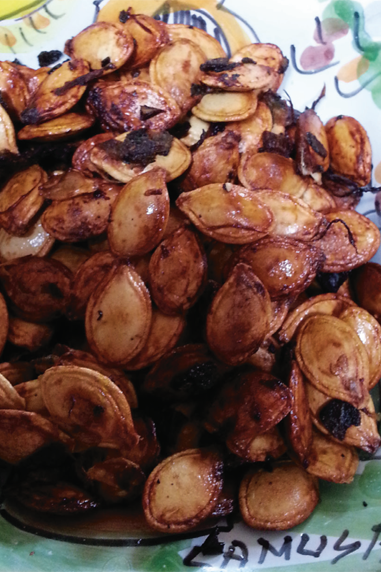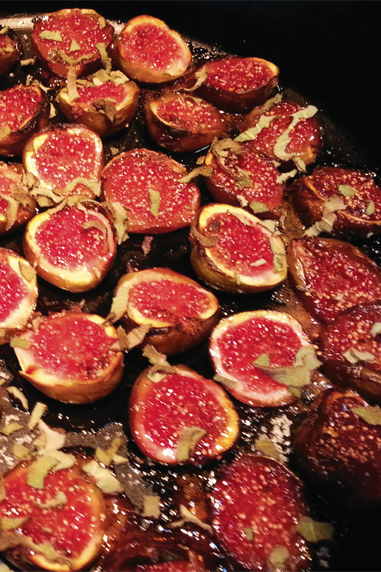Simply Squash
Winter squash can be grown successfully in Kentuckiana, you just need about 95 days to maturity and a little extra space. But some of that space is vertical. Most types of winter squash are vining plants that do well if they have a fence to twine themselves to. They must be left on the vine until maturity if you want them to cure and store well. They are usually ripe when the vines have died back and the stem has turned woody. The most common types include butternut, buttercup, acorn, spaghetti and the sizeable Hubbard squash.
When preparing the large Hubbard squash I just stick the whole thing, uncut, into the oven and bake it at 350° until it is soft. I let it cool and then scoop out the soft flesh to make into puréed soups. It freezes well in this form, too. The other winter squash can either be cut into chunks, raw, for stew, or cut in half and precooked in a shallow dish, cut side down, with about ¾ inch of water. Typically 30–40 minutes in a 350° oven will do the trick.
Another great thing about winter squash – once you have made your mixture you can return it to its shell to serve! Once it has cooled, however, sort out your seeds and reserve them for roasting. You can mix absolutely anything in winter squash but here a few ideas to get you started. Remember, I am not a recipe writer, just a gardener and cook, so you may need to experiment and adjust amounts to your own tastes. When in doubt, add more herbs to your mixture and top with feta cheese!
Simple Spaghetti Squash
Halve the spaghetti squash lengthwise and pre-cook in a shallow dish, cut side down, with about 3/4 inch of water. Typically 30–40 minutes in a 350 degree oven will do the trick. After it has cooled, scoop the spaghetti-like strands of squash into a bowl and mix with garlic, olive oil,salt, pepper and parmesan cheese. Return the mixture to the shell, add a little parmesan to the top and heat through. Set the oven on broil for the last few minutes to brown the parmesan sprinkled on top.
Roasted Squash Seeds
You can make a snack or salad garnish by roasting your leftover squash seeds in your leftover sage butter. After your prepared squash has cooled, sort out the seeds and let them dry overnight in a bowl.
Preheat an iron skillet to 450 degrees, add some sage butter, toss in your seeds and roast for 12 minutes, or until golden brown.
Toss the seeds halfway through cooking to get even browning. Sprinkle with a little salt, if desired.
Spaghetti Squash with Sage Butter, Caramelized Figs and Balsamic Vinegar
Pre-cook the spaghetti squash and let cool.
For the butter: Chop a large bundle of sage and 1 small shallot and add to a half a stick of softened butter. Finish with a teaspoon of lemon zest.
For the figs: Preheat a cast-iron skillet to 450 degrees, sprinkle a little sugar onto the bottom and place halved figs cut side up in skillet. Sprinkle a little more sugar on top. Return to the oven and broil for about 10 minutes, until figs begin to caramelize and turn brown. Remove from the oven and sprinkle with good-quality balsamic vinegar and fresh sage. Remove from the pan.
The mixture: Scoop out the squash into a bowl and mix your herb butter in (using your hands works best to evenly incorporate the herb butter), adding salt and pepper to taste. Fold in the caramelized figs. Return to the shells and top with feta cheese (you can drizzle more balsamic now, too, if desired). Return to a 350 degree oven to heat through, turning the broiler on for the last few minutes to brown the feta. Serve with cast-iron-blasted Brussels sprouts (use the iron skillet after you have finished your figs) and a salad and you have a perfect winter meal.







